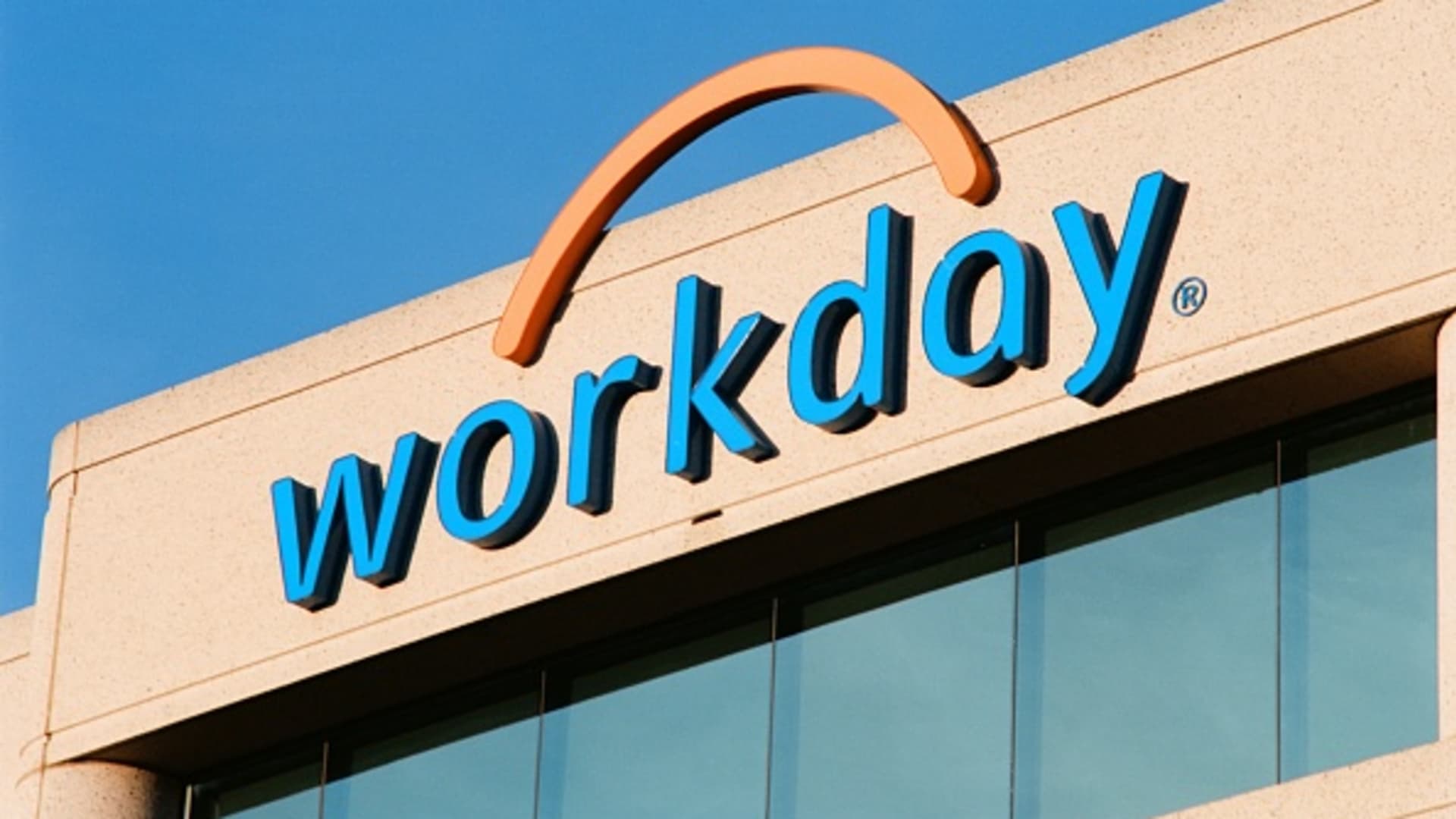A close-up of the Workday logo on its headquarters in Pleasanton, California.
Smith Collection | Archive Photos | Getty Images
Workday shares jumped almost 10% in extended trading on Friday after S&P Dow Jones Indices said the cloud software vendor will be added to the S&P 500.
It will replace Amentum Holdings on the index effective Dec. 23, according to a statement.
The index has picked up a handful of other prominent technology stocks this year, including Dell and Palantir.
Workday, founded in 2005 and based in Pleasanton, California, went public on the New York Stock Exchange in 2012. In 2017 Workday switched its listing to the technology-centric Nasdaq.
In November, Workday said it delivered $193 million in net income on $2.16 billion in quarterly revenue, which was up 16% year over year.
In each fiscal year until 2022, Workday had reported losses. Inflation and higher interest rates were making investors less interested in backing unprofitable companies, and many software executives understood they had to reduce costs.
To be eligible for inclusion in the prominent U.S. index, companies need to show a profit in the most recent quarter, along with profit in the four most recent quarters.
In February, Carl Eschenbach, a former VMware operating chief and Sequoia Capital investor, became Workday’s sole CEO after being co-CEO since late 2022 alongside Aneel Bhusri, a co-founder. Workday will release an artificial intelligence agent for creating and submitting expense reports this year, an an agent for identifying inefficiencies in business processes will arrive in 2025, Eschenbach told analysts on a November conference call.
It’s normal for stocks to go higher on news of their arrival in a prominent index, as fund managers need to rebalance their portfolios to reflect index changes.
While more tech companies have been joining the index, not all of them have proven to be money makers for investors who track the benchmark. Server maker Super Micro was added to the S&P 500 in March after a huge rally in the stock, driven by demand for Nvidia-based servers.
The shares peaked soon after that but then tumbled in the ensuing months after the company failed to file its financials on time. The stock is about 60% off its peak, and the company said on Friday that it received an extension from Nasdaq to keep its listing.
This is breaking news. Please refresh for updates.
